
When cooking dinner, do you ever wish to pluck a few fresh leaves from the nearest pot of aromatic greens to spice up whatever dish you are creating? If so, you may just be an herb-lover, a perennial forager or a budding chef. No matter what side of the wild herb or cultivated fence you are sitting on, we’ve made an easy-to-grow herb list just for you!
All of them are common, not overly needy, deliciously fragrant and nutritionally beneficial too. What’s not to love about adding abundant health to your homecooked meals?
While it is nicer-than-nice to grow herbs indoors, sometimes you’ll want to expand your area, and your growing skills, to the outside garden. From here, you will be able to harvest on a larger scale, so that you may even learn to dry your own herbs for winter storage too.
8 easiest herbs to grow outdoors or in containers
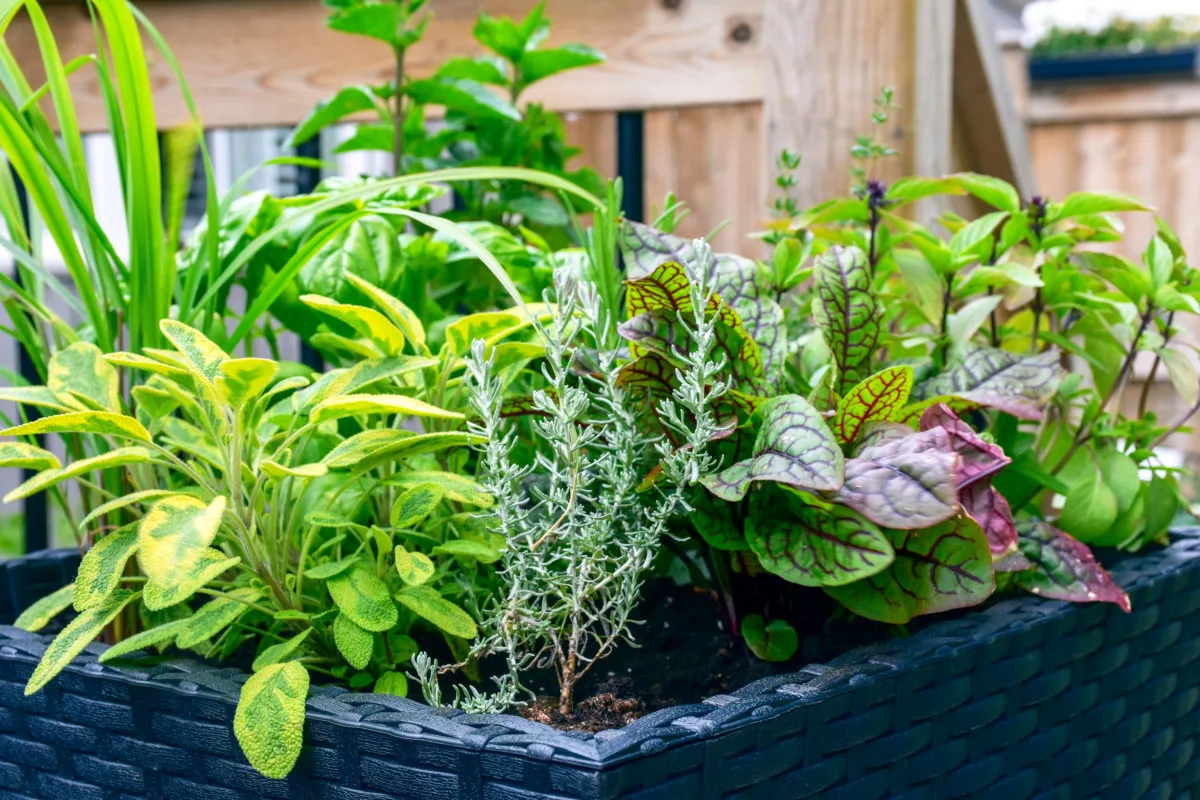
Plants need two basic elements to grow: water and sunlight.
6 hours of sun per day is best, but more is better.
As far as water preferences, plants will also prefer the non-chlorinated stuff, just like you and me.
You’ll also find, in time, that herbs, like all garden plants, produce more prolifically when they are loved, nurtured and tended to as well.
If you are growing plants indoors, this means that you will want to provide them with plenty of space in a clay or ceramic pot, with well-draining soil, and a saucer or plate to catch the runoff. Water your herbs deeply and infrequently for the best results. I’ve got everything you need to know about growing herbs indoors.
If you are planting herbs outside, you might choose to raise your environmental awareness as you grow your gardening skills. Consider companion planting as a means of controlling pests and attracting beneficial insects.
No matter whether you plan to plant your favorite herbs indoors or out, it may just be a lot easier than you think. Get excited and plant herbs not only because they taste amazing – they will take your homestead skills to a whole new level too!
Basil
How does your basil grow? Tall and woody, or lush and bushy?
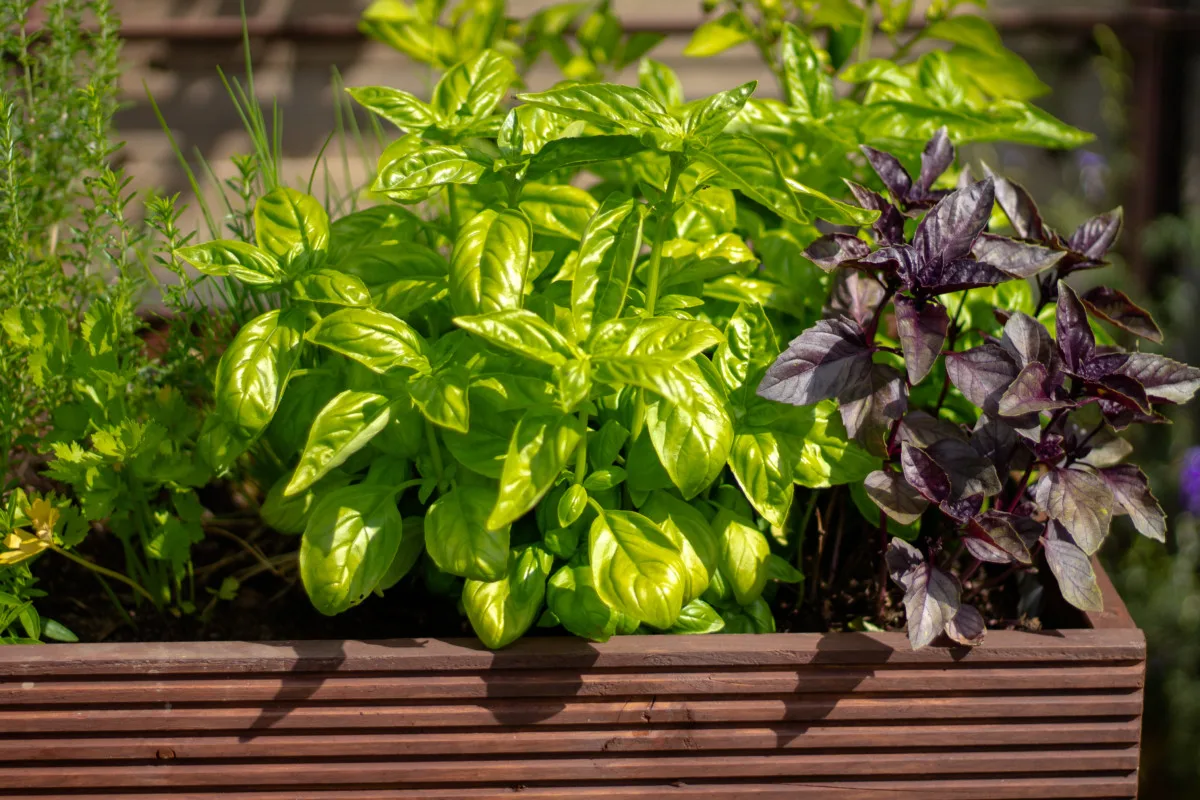
Lovely as basil leaves are, they do tend to fall on the scraggly side of life when left to their own plans. But that all changes when you learn how to prune your basil plants properly.
If you are growing basil from seeds, start them indoors 6 weeks before your last expected spring frost.
To plant seeds outside, wait until soil temperatures warm up to at least 50°F before attempting to germinate anything.
If you desire to speed up the act of getting around to eating pesto, a faster way to see results is to propagate basil from cuttings.
Chives
Out in the garden, chives grow by bunches like crazy! Nearly every year they will need to be dug up and divided, so they can send up even more delicious green chives.
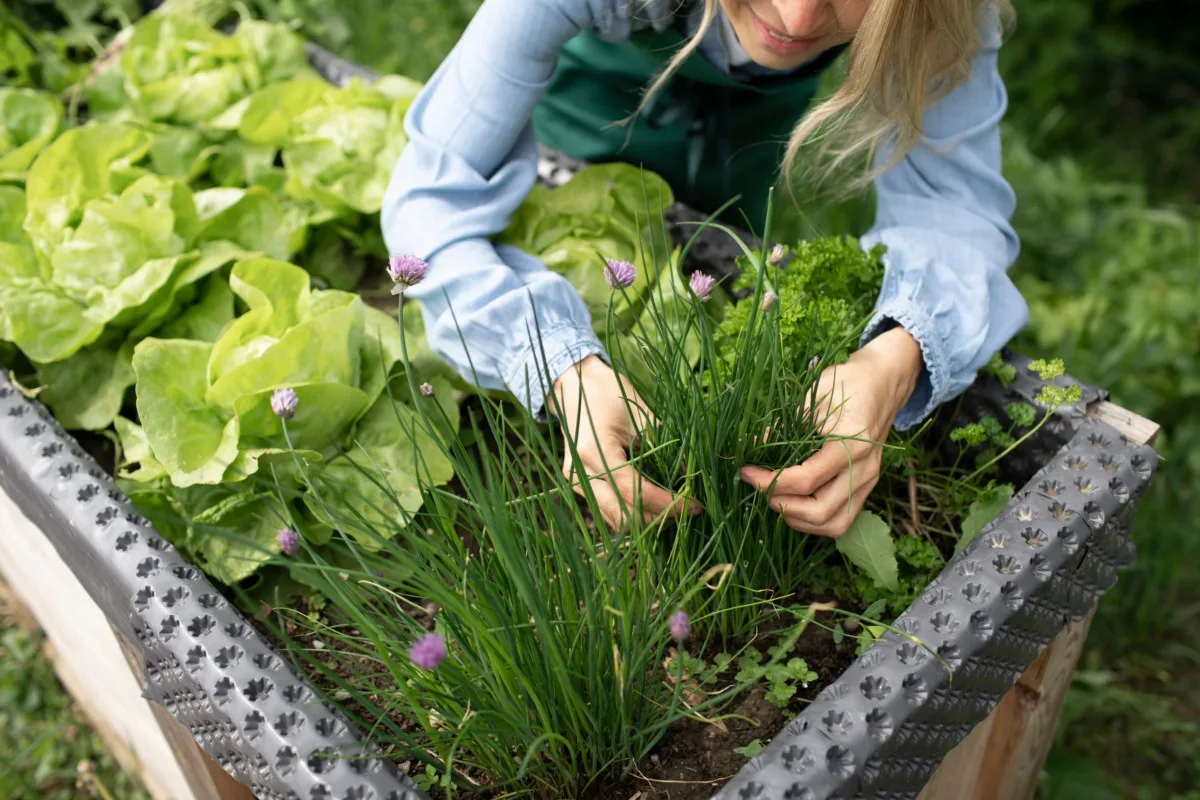
In late fall, at the end of the “growing season”, you can dig up a generous handful of chives from the garden, and replant it in a pot to leave on your sunny kitchen countertop all winter long. But, first you will want to force the leaves to die back. Then bring the potted chives into your home, in essence, tricking them into an earlier spring.
Combining efforts of growing both indoors and out, you will be able to harvest chives all throughout the seasons.
Don’t forget to eat the beautiful, aromatic flowers too!
Lemon balm
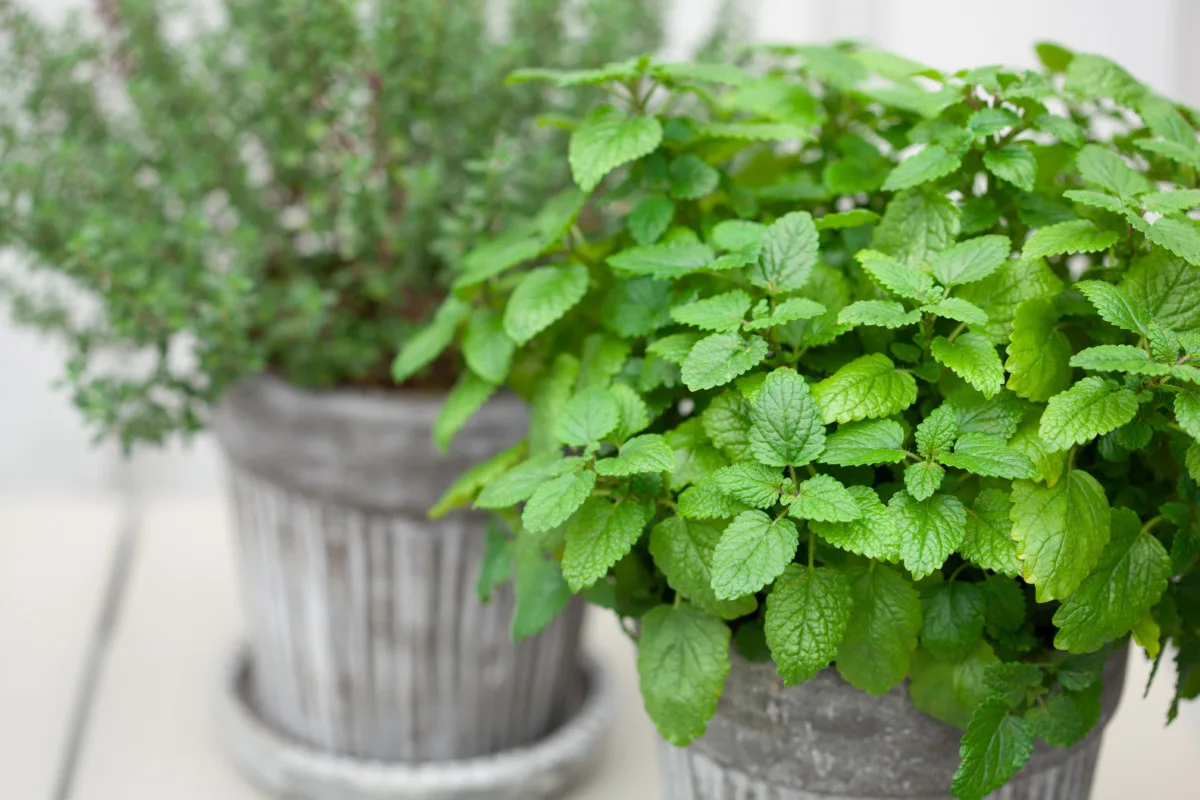
One of the hardiest herbs in our garden, outside of the vigorous chives, is lemon balm. It is an eager perennial that thrives outside, giving loads of lemony leaves, year after year. In the deepest winters it may need to be mulched, but it is tough and will keep on growing when you least expect to see it rise again.
Indoors, it is not quite the same hardy plant, yet it will still thrive given the right care.
As soon as your lemon balm is “harvestable”, gently remove the leaves (not more than 25% of the plant at once) and get ready to use it in lemonade, shortbread cookies and salads.
If it grows really well for you, here are 12+ Things To Do With Lemon Balm @ The Nerdy Farm Wife
Mint
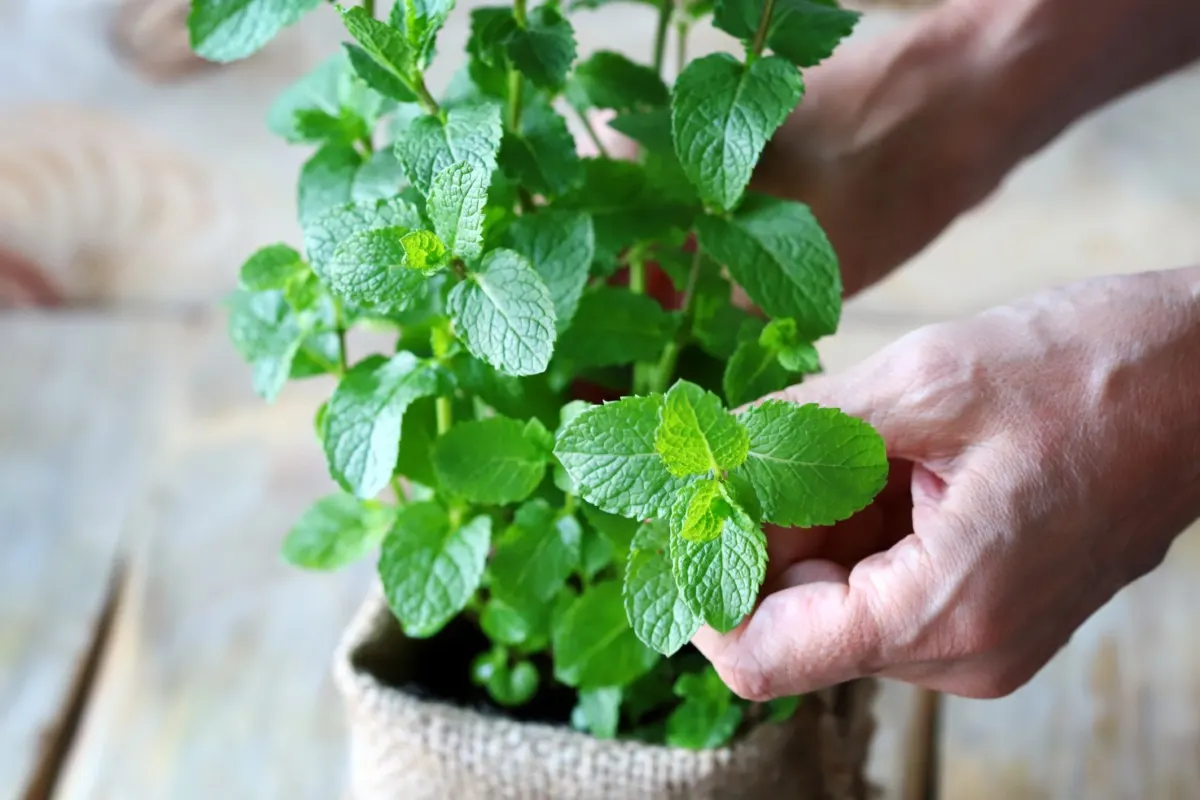
An herb that is as easy to grow as it is hard to kill? That is mint, right down to the “t”. However, if it does ever become invasive, there are ways to get rid of it, for example, by pouring boiling water straight on it. It can also be kept under control by planting it in containers, if you are afraid to let it loose in your backyard.
For the sake of easy to grow herbs, let’s find out how to let mint thrive. With more than 7500 varieties of mint, it must not be all that hard!
Planting mint in containers is an uncomplicated and rewarding process. It takes full sun to partial shade, a fairly moist soil that will also tolerate drying out, and very little attention. All that is required, is to pinch it back when you find the time – when you grab a few leaves for a garnish.
The most common Lamiaceae mints are:
- peppermint
- spearmint
- apple mint
- pineapple mint
- chocolate mint
- ginger mint
- orange mint
- catmint
In containers, or in the ground, they will be right at home, ready for plucking whenever you need a few fresh leaves.
Related Reading: How To Grow Mint Plants Indoors
Oregano
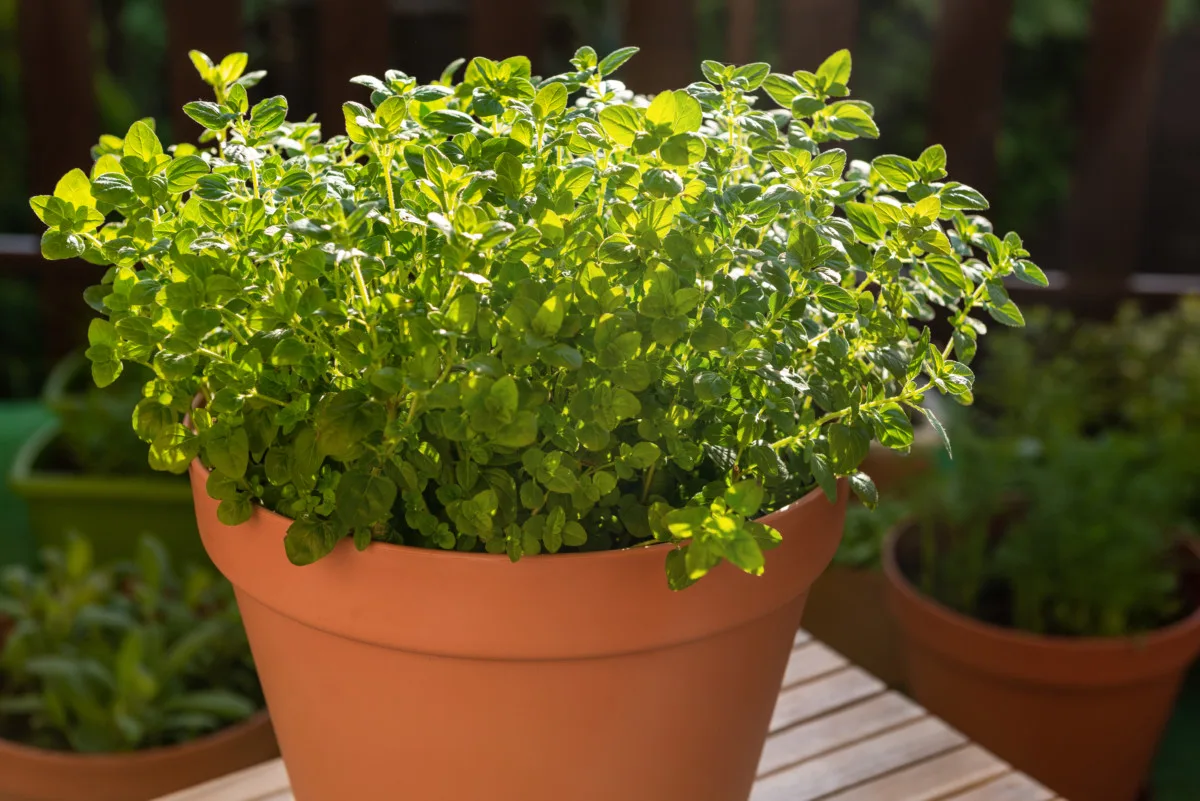
Everyone will have their favorite herb on the list. Oregano is mine. Somehow, despite all efforts, I can never seem to grow enough of it. Or maybe I just use too much of it in cooking…
Either way, oregano is one herb that you must plant if you plan to eat Italian food of any kind.
Oregano can be started by seed, or divisions from a healthy plant. When growing oregano, it is important to keep in mind that it prefers a warm climate. Give it as much heat and sunlight as you possibly can – planting it next to your peppers and tomatoes in the garden.
Parsley
Classic herbs should always be included in your herb garden, parsley is one of these. Chop it up finely and add it to your Hollandaise sauce, mince it and fold it into your quiche, use it as garnish next to your homegrown heirloom tomatoes. You can even toss a stem or two into your morning smoothie, there will always be a time and place for eating parsley.
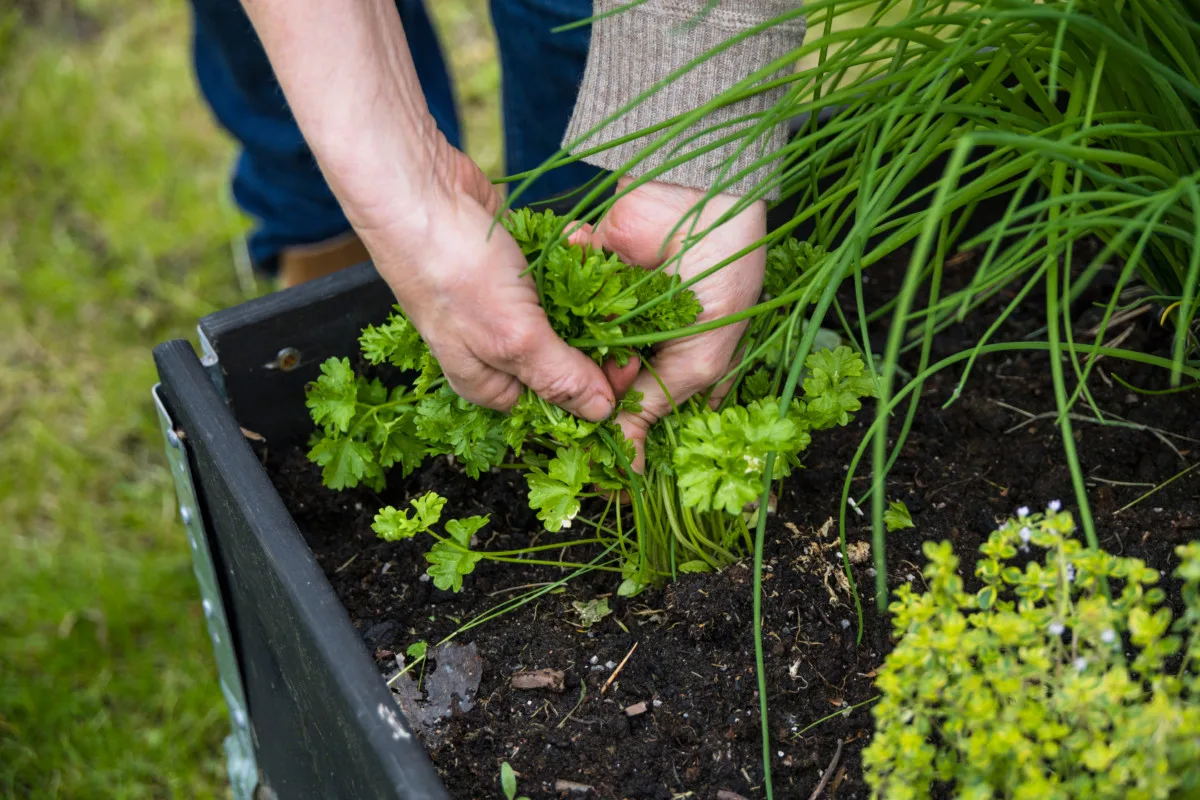
But buying fresh herbs from the store doesn’t always make a lot of sense, and often it can be a waste of money. How often has it happened that your parsley got all slimy before you had a chance to use it? That’s the main reason for growing your own herbs – so you can harvest them fresh, right when you need them.
And you are more likely to use fresh green herbs when you can harvest just as much as you need, which is often just a leaf or two.
So, parsley. On potatoes…
If you are starting parsley from seeds, sow them outdoors in spring, or early fall, if you are ultra-prepared! Germination is not always steady, so have patience.
Your indoor herb garden will benefit from a pot of parsley too. Just be sure to plant in well-draining potting soil, and give the parsley as much sun as it can handle, even if you have to take the pot directly out in the sunlight from time to time.
Thyme
When it comes to flu, cough and cold season, thyme is a wonderful herb to have on hand.
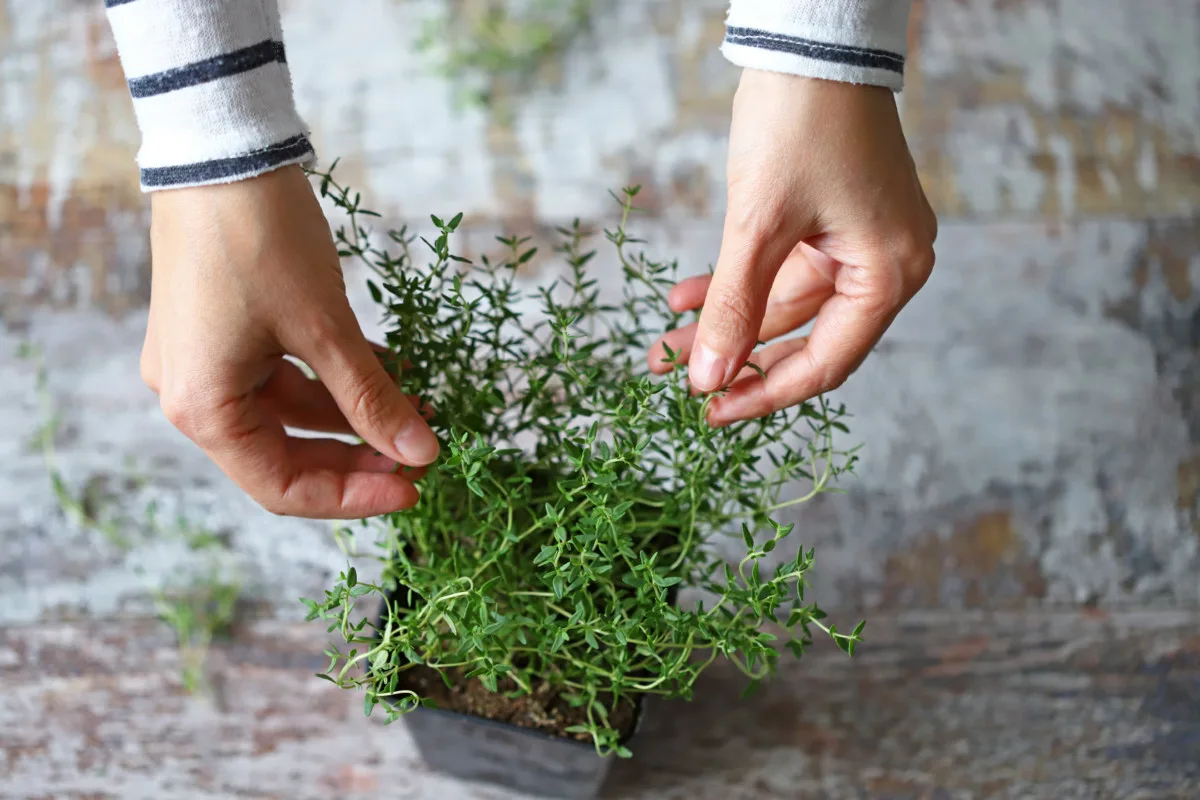
Thyme will help to boost your immune system with its antimicrobial, anti-inflammatory and antispasmodic qualities, as it supports your respiratory, digestive and nervous systems too.
If you feel a sore throat coming on, pour yourself a steaming mug of thyme tea, or add a sprig or two to your homemade healing chicken soup.
When planting thyme outside, consider that it is a drought-tolerant plant – don’t be tempted to overwater it!
Thyme is also one of those beneficial plants that will attract bees, so if you have room for more than 1 plant, make sure to fill up the space with thyme for all of nature to enjoy.
Rosemary
Another favorite herb to cultivate is rosemary.
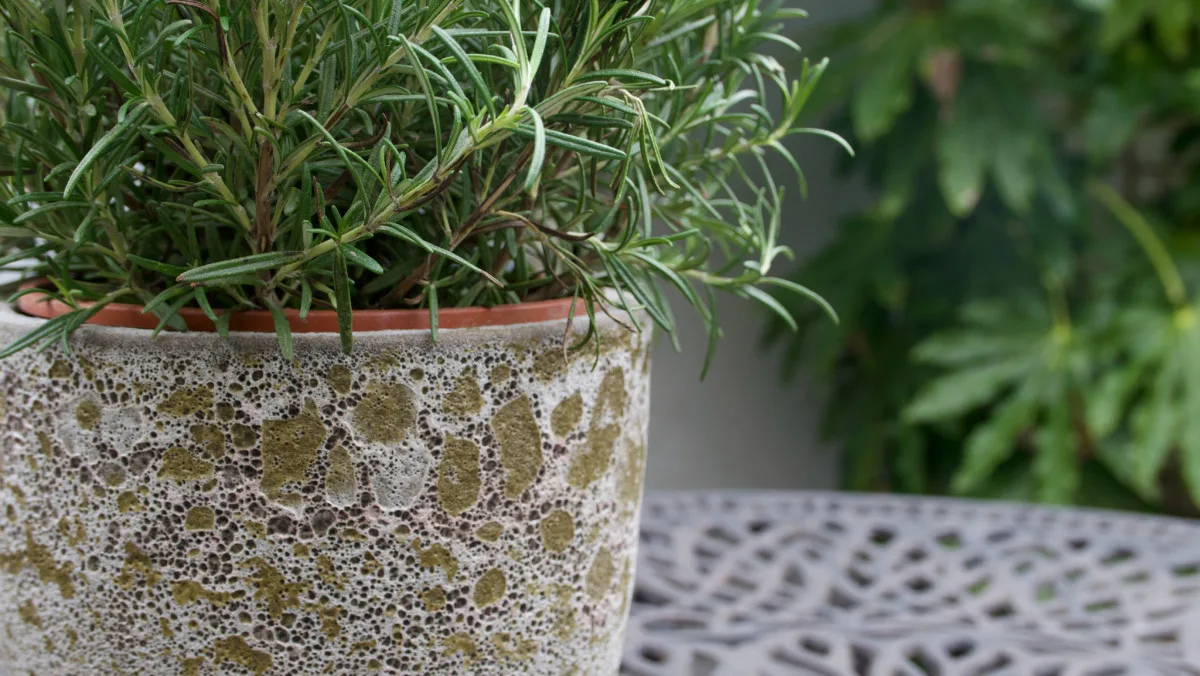
Grow it for its many medicinal uses, grow it because it tastes amazing, grow it to make an infused rosemary honey or frozen lemon-rosemary ice cubes.
Rosemary is a hardy perennial that can survive for several years. That being said, growing rosemary from seed is a tedious process, and it is far better to propagate rosemary from softwood stem cuttings. Depending on your location, you may need to bring the plant in over winter, or heavily mulch it outside.
There are so many reasons to have rosemary in the garden – or on the kitchen counter, but only do so if you love it! This applies to any and all herbs you intend to grow, as well as all the fruits and veggies in your garden. The more you enjoy eating what you sow, the more you will take pleasure in growing them too.
So what will it be? A pinch of mint in your lemonade, or a handful of chives on your potato wedges?
Possibilities for growing herbs, indoors or out, always abound! All it takes is a pot, some soil, seeds or cuttings, sunlight and water, not a lot of anything else.

Get the famous Rural Sprout newsletter delivered to your inbox.
Including Sunday musings from our editor, Tracey, as well as “What’s Up Wednesday” our roundup of what’s in season and new article updates and alerts.

